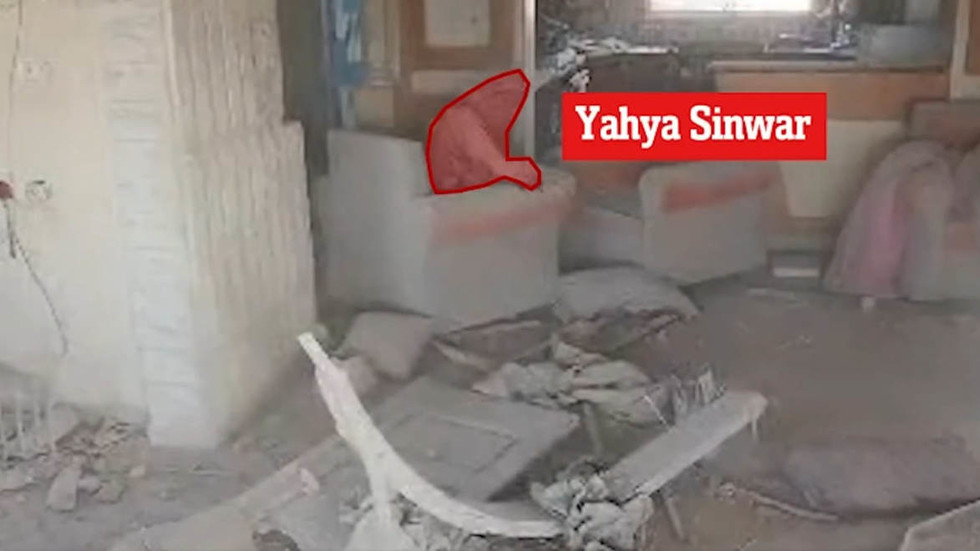The Israeli military recently claimed that Hamas political leader Yahya Sinwar was killed in southern Gaza, marking a significant development in the ongoing conflict between Israel and Hamas. The Israel Defense Forces (IDF) made the announcement on Thursday and subsequently released a drone video positioning itself as the footage capturing Sinwar’s last moments. This newfound information sparked celebrations among Israeli officials, who regarded Sinwar as a pivotal figure in orchestrating the group’s military strategies, notably the surprise attacks on October 7. The video, showcased by IDF international spokesman Lieutenant Colonel Nadav Shoshani, purportedly provides evidence of Sinwar’s demise, as the military looks to bolster its narrative against Hamas.
In the brief 48-second clip shared on social media, the drone footage depicts a devastated building in Gaza, where a shrouded figure is seen seated in an armchair. The narration by Shoshani described this footage as “raw,” and at a certain point, the video stops to label the individual with a red outline, asserting that this figure is indeed Sinwar. As the video progresses, it captures the man attempting to throw what appears to be a stick or sword toward the drone, though he misses. The video concludes before revealing any further details, leaving uncertainty surrounding the exact circumstances of the encounter and the status of the figure shown.
Reports indicate that Sinwar was killed during what was described as an “unplanned operation” by units of the 828 Bislach Brigade. This operation took place in the Rafah neighborhood of Tel Sultan, where IDF forces had been actively engaging Hamas targets. It was reported that surveillance drones tracked Sinwar entering a targeted building, prompting tanks to direct fire toward it. Afterward, a drone was sent into the area to verify the outcome of the strikes. When Sinwar allegedly retaliated against the drone, tanks opened fire again, solidifying the targeted approach by the IDF.
Following the operation, images circulated on social media purportedly showing Sinwar’s body, which was found buried under the rubble of the collapsed building. The IDF later confirmed his identity through dental and fingerprint records collected during his previous incarceration, establishing a connection that would assist in validating the claims made concerning his death. Notably, reports mentioned that a portion of one of Sinwar’s fingers had been severed and quickly sent to a laboratory for rapid identification purposes to substantiate the military’s assertions.
In addition to the confirmation of Sinwar’s identity, Israeli media shared details regarding items recovered from the scene. A reporter from Channel 12 presented photographs of various objects found on Sinwar’s body, which included personal belongings like mints and money, a lighter, and a Kalashnikov rifle. Of particular interest was an employee ID card for the United Nations Relief and Works Agency for Palestine Refugees (UNRWA), linking Sinwar to broader international and humanitarian contexts within the region. The presence of these items sparked discussions on his dual role in both militant and civilian spheres, highlighting the complexities of the ongoing conflict.
The ramifications of Sinwar’s death extend beyond immediate military gains for Israel; they echo within the political landscape of the region and the dynamics of the ongoing conflict. As a key architect of Hamas’s strategies against Israel, his elimination could potentially shift the balance of power within the organization, thereby impacting its operational capabilities. However, the uncertainty surrounding leadership succession within Hamas raises questions about whether his death may incite further aggression or whether it will destabilize the group’s command structure. As the situation continues to evolve, the implications of this operation will be closely monitored by both regional stakeholders and the international community at large.

